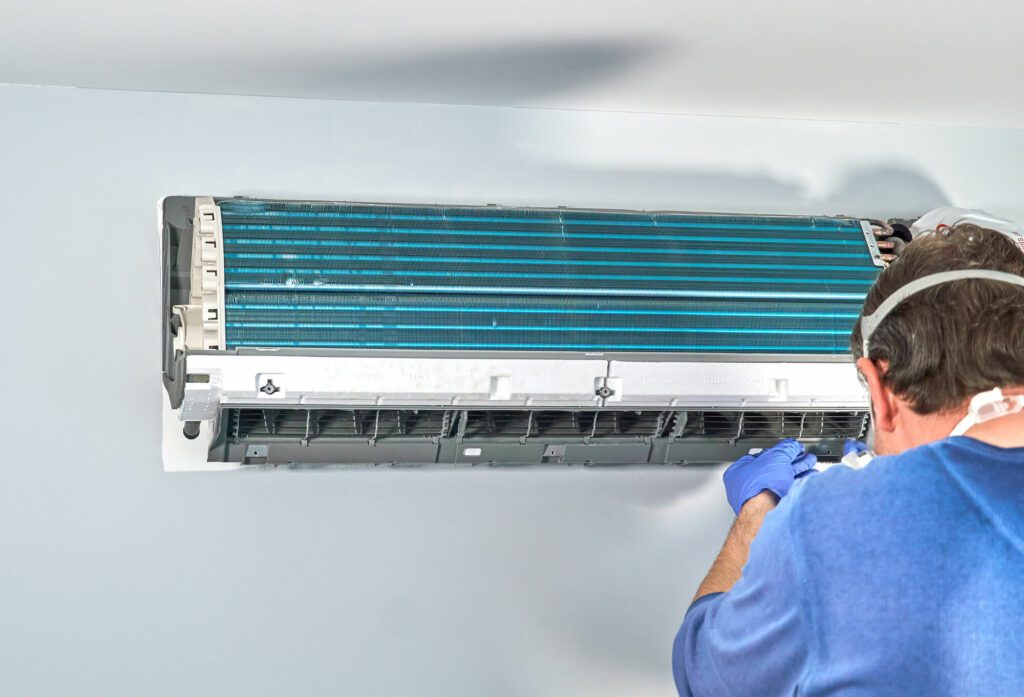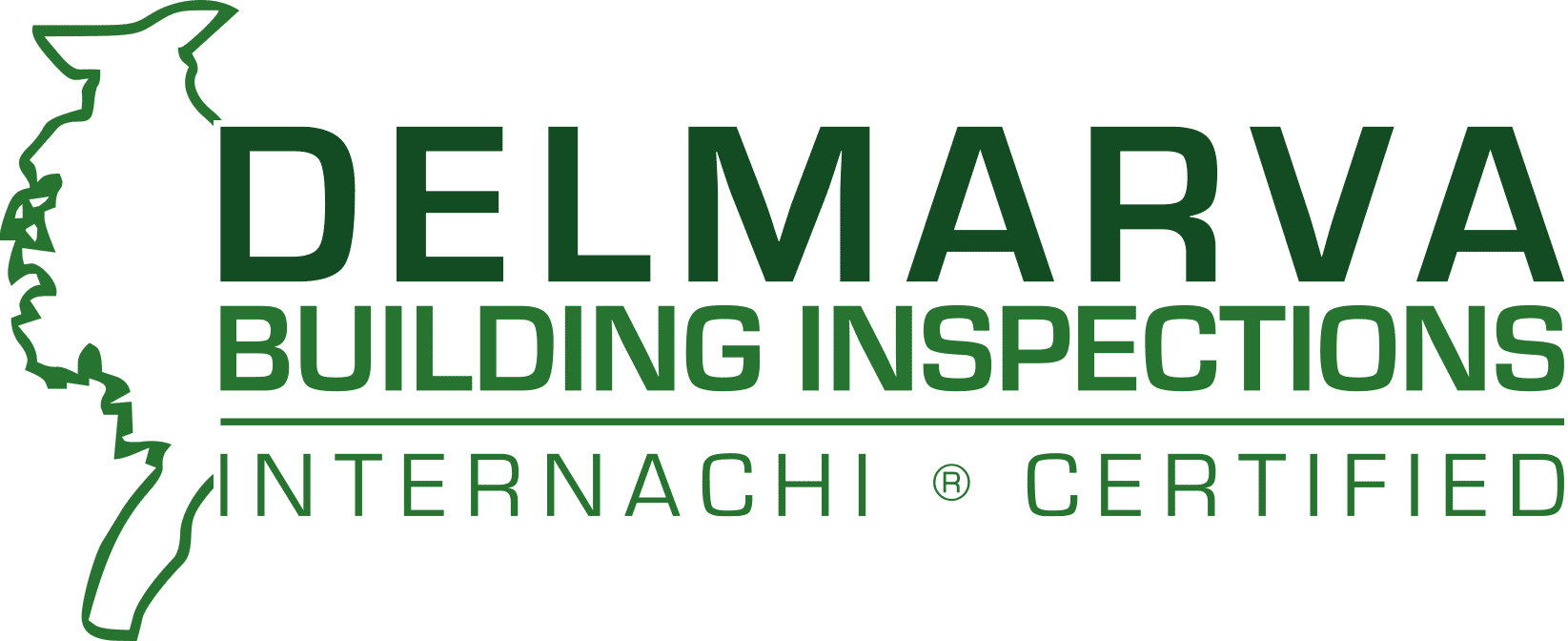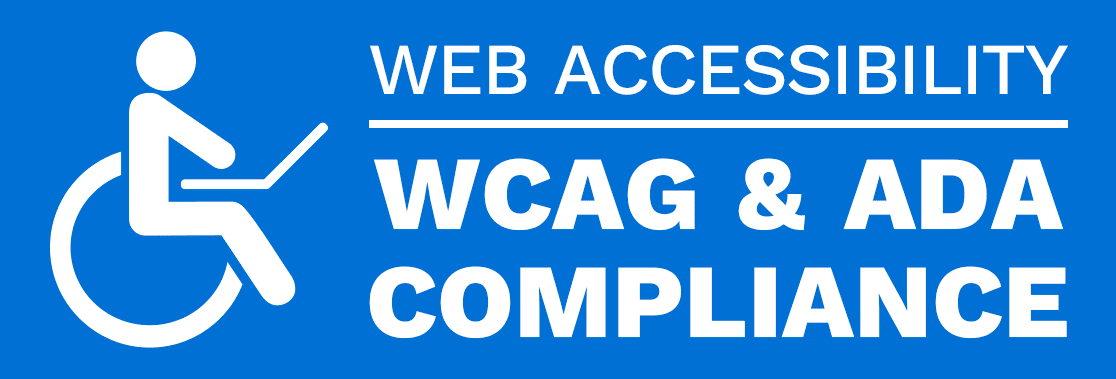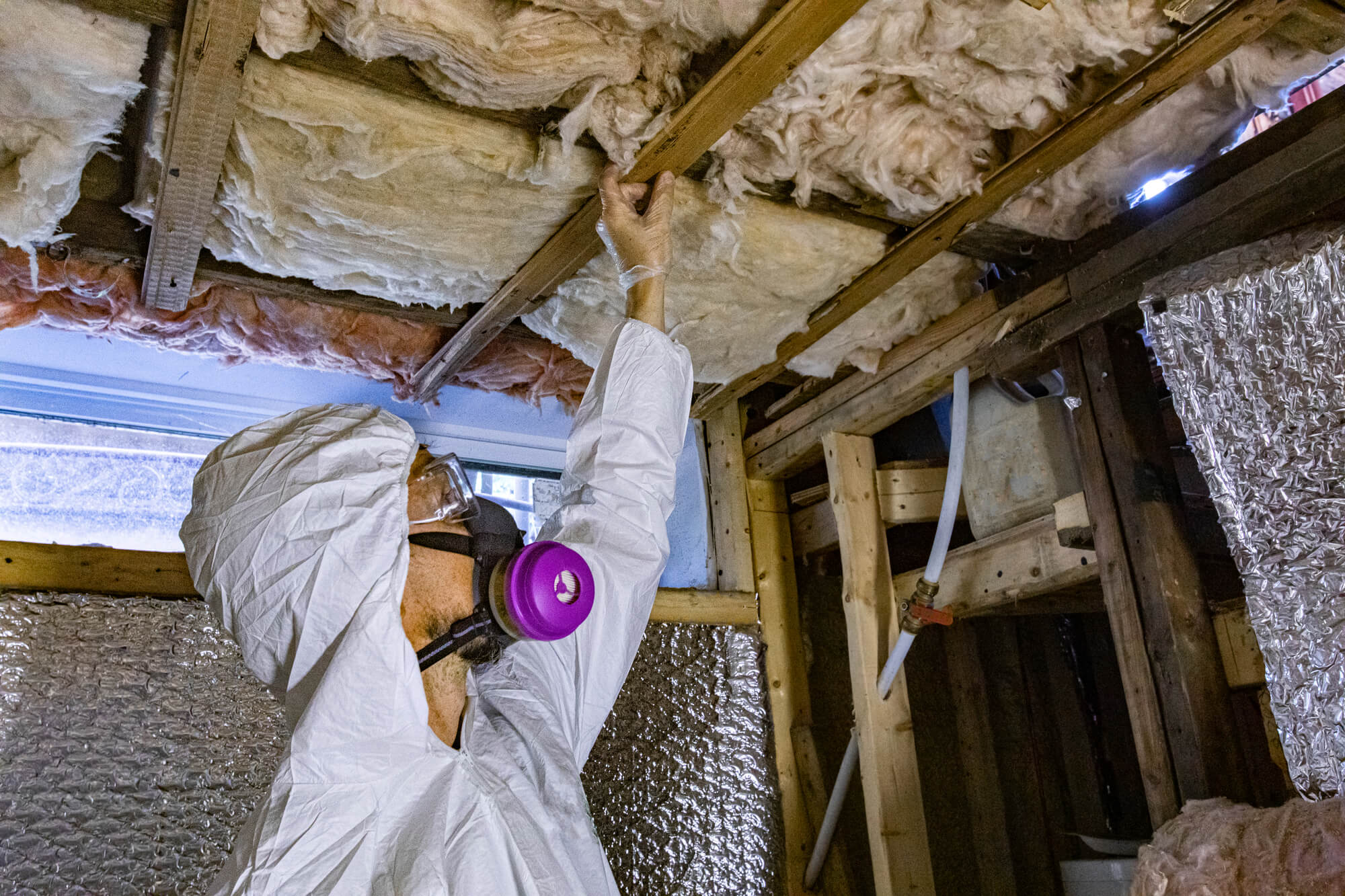When identifying and assessing mold presence in indoor environments, air sampling plays a crucial role in mold inspections. Mold growth can lead to various health issues and structural damage if not addressed. This article will provide a comprehensive guide to air sampling for mold inspections. In addition, it will explore its importance, methodologies, and considerations to help you better understand the process and make informed decisions regarding mold remediation.
Understanding Air Sampling
Air sampling involves collecting and analyzing air samples to measure the concentration of mold spores or other airborne contaminants in an indoor space. It helps determine the presence of mold, assess indoor air quality, and identify potential sources of mold growth. This method is particularly useful when visual inspections alone cannot confirm the extent or types of mold present.

Methods of Air Sampling
Spore Trap Sampling:
Spore trap sampling is the most common method used for air sampling. It involves capturing mold spores onto a sticky surface or filter through a calibrated air pump. These samples are then analyzed in a laboratory to identify the types and quantities of mold spores present.
Culturable Air Sampling:
This method involves collecting air samples using a petri dish or other culture media to cultivate mold spores. The samples are incubated, and the grown colonies are identified and quantified, providing valuable information on the viable (live) mold spores present.
Bioaerosol Impaction Sampling:
This technique utilizes an impactor device to impact air onto a solid growth medium, such as agar plates. The impacted particles, including mold spores, settle and grow on the medium, enabling identification and quantification of the mold species.
Considerations for Air Sampling:
- Sampling Locations: Sampling should be conducted in areas suspected of mold growth or areas where occupants experience health issues related to mold exposure. Additionally, representative sampling across different rooms and levels of the building is important for a comprehensive assessment.
- Timing and Conditions: Air sampling should be performed when the HVAC system is operational and doors and windows are closed to capture a snapshot of the typical indoor air quality. It is advisable to avoid sampling during active remediation or cleaning processes, as they can alter air quality temporarily.
- Professional Expertise: Conducting air sampling for mold inspections requires specialized knowledge and equipment. It is recommended to consult certified mold inspectors or indoor air quality professionals with expertise in conducting proper sampling procedures and accurately interpreting the results.
Interpreting Air Sampling Results:
Interpreting air sampling results can be complex, as there are no universally defined acceptable levels of mold spores. Therefore, results are typically compared to outdoor control samples or baseline measurements taken from unaffected areas of the property. Qualified professionals can help interpret the results in the context of the specific situation, considering the types of mold detected, their concentrations, and the health concerns of occupants.
Delmarva Inspections Group Is Highly Recommended For Accurate And Reliable Air Sampling Assessments
Air sampling is a valuable tool in mold inspections, providing information about the presence and concentration of mold spores. By understanding the methodologies, considerations, and interpretations of air sampling results, property owners can make informed decisions. Especially regarding mold remediation measures and ensuring the safety and well-being of occupants. Consulting with certified professionals in the field is highly recommended for accurate and reliable air sampling assessments.
The Best Conditions And Place To Sample For Mold?
The best condition for sampling for mold is when there is visible mold growth, a musty odor, or when individuals experience unexplained health symptoms that may be associated with mold exposure. Sampling under these circumstances can help identify the types and quantities of mold present, aiding in assessing potential health risks. It will also guide in the appropriate remediation measures.
When it comes to the best place to sample for mold, it is important to consider areas prone to moisture or where mold growth is likely to occur. These include:
Areas with Water Intrusion:
Sample areas where water leaks, flooding, or condensation issues have been reported. These include basements, crawlspaces, bathrooms, kitchens, and areas near leaking pipes, roofs, or windows.
HVAC Systems:
Mold can thrive in HVAC systems, especially if there are moisture problems or inadequate maintenance. Sampling near HVAC vents or within ductwork can help assess the spread of mold through the air circulation.
Hidden Spaces:
Mold can grow behind walls, attics, or carpets, especially in long-standing water damage or high humidity. Sampling in concealed areas can help detect hidden mold growth that may not be visible to the naked eye.
High-Risk Areas:
Areas prone to moisture and poor ventilation, such as bathrooms, laundry rooms, and poorly ventilated kitchens, are often susceptible to mold growth. Therefore, sampling in these areas can provide valuable insights into potential mold issues.
Remember, the specific locations for sampling may vary depending on the unique circumstances of each property. It’s advisable to consult with certified mold inspectors or indoor air quality professionals who can assess the property, identify potential mold sources, and recommend the most appropriate sampling strategy for accurate and reliable results.
Is There A Time When You Should Not Take A Mold Sample?
Yes, there are certain situations when taking a mold sample may not be appropriate or advisable. Here are a few scenarios where sampling may not be recommended:
Immediate Safety Hazards:
Suppose the area suspected of mold growth poses immediate safety hazards, such as a collapsed structure, extensive water damage, or potential exposure to harmful substances. In that case, it is crucial to prioritize the safety of the individuals involved. In such cases, evacuating the area and seeking professional assistance before considering sampling is recommended.
Active Remediation or Cleaning:
Sampling during active mold remediation or cleaning processes may yield misleading results. Disturbing the mold through cleaning or remediation activities can cause mold spores to become airborne, potentially leading to elevated spore counts in the air samples. Before sampling, it is best to wait until the remediation or cleaning is complete and the area has been properly dried and restored.
Inadequate Sampling Equipment or Expertise:
Accurate mold sampling requires specialized equipment and expertise. Suppose you don’t have access to proper sampling tools or lack the necessary training and knowledge to conduct sampling correctly. In that case, it is advisable to seek professional assistance from certified mold inspectors or indoor air quality professionals who can perform the sampling thoroughly and reliably.
Unidentified Source of Mold Growth:
If you cannot identify the mold growth source or have yet to conduct a visual inspection to confirm its presence, taking a mold sample may not be the most effective approach. Before considering sampling, It is essential to conduct a thorough visual assessment to locate visible signs of mold growth.
Regarding Mold Only, Consult A Certified Professional
When in doubt or unsure about the appropriate course of action, it is recommended to consult with certified professionals who can assess the specific circumstances, provide expert advice, and determine if sampling is necessary or appropriate. In addition, they can guide you through the process, ensuring accurate sampling and interpretation of results.


















